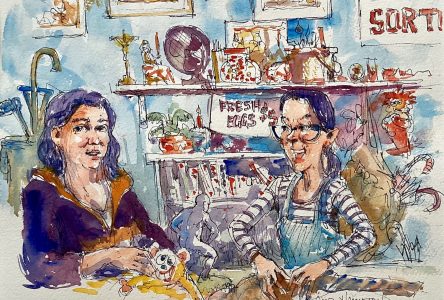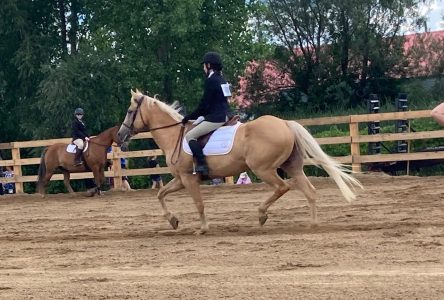Galeri Elca London: Art Intui takes over historical Brome Lea house
Brome Lake is getting a new art gallery. Situated in the Brome Lea house, a historic property on Victoria Street dating back to 1886, Galeri Elca London: Art Inuit et plus will showcase primarily Inuit art, but owner Mark London will also share other pieces that catch his eye. London, whose family originally founded the gallery in Montreal in the 1960s, hopes to share his love for the art form and that visitors will find their own special treasure.
“The gallery was founded in 1960 by my parents and we initially showed works by Canadian artists, but over the years, through various locations and interactions, we showed Canadian, American, and European works,” said London. “By the mid 60s, we started to show Inuit art. It was a dual major of non-Indigenous art and Indigenous art. At some point around 25 years ago or so, we decided to focus exclusively on Inuit Art.”
At a time when there was a lack of galleries for artists to share their work with the public, London’s parent became “facilitators” for their artist friends. “A couple of artists started giving commissions for their sales. At the time my mother was working as psychologist and she had three kids at home. She thought this was a great way to make a living and thought it would be a nice idea to start dealing art from the basement of our home.”
They eventually opened up a Gallery in Mount Royal, moved to Sherbrooke Street, then to Old Montreal, back to Sherbooke Street, before London moved it to Brome Lake. “This is sort of a semi-retirement thing; I’m not opting out of the rat race, but it’s sort of a lifestyle change. My wife and I wanted to opt out of Montreal.”
The vibrancy and the cultural scene in Brome Lake and its surrounding communities attracted London and his wife to settle in the area and they have been working on putting together the new gallery space ever since taking over the Brome Lea House. “I think initially, my late mother was a psychologist and she had a predisposed interest in art by Indigenous Peoples and its connections to spirituality. So, when we started dealing Inuit art I was a child and I literally grew up with the art in the house.”
London purchases the pieces that are showcased through co-ops. “Artists bring their work into their local coop and negotiate a price. The co-op then pays them and they either get money or they own the local store where you can buy food, clothing, guns, and ammos and whatever they need. They turn the sculptures they’ve made into food and clothing, and the co-op becomes a distributor of Inuit art dealing with galleries.”
Sharing his love of the art and the diversity that is found within it, is a goal. “Everyone has an idea in their head of what Inuit art is and they’re almost all wrong. There is so much variety that you have to look more deeply to see just how wide and wonderful the selection is. Most of our inventory falls into two categories: sculpture and prints and drawings, works on paper, but I do occasionally have textile works or ceramic pieces.”
With a background in art history, London will also share timely pieces that he likes and purchases at auctions. “I deal in new and used. My background is in art history and I always felt that it’s best whenever possible to contextualize. I try and have pieces that were made in the 60s and 70s to show evolution of the art form, or the artists style and career, and how it evolved over time.”
London will be welcoming visitors to the gallery with open arms and he wants people to find their special work of art. “I never want to force someone to purchase something I have. I don’t want to have to sell anything, I want to have pieces that people want to buy. I hope people will say I like this, I want it.”
The gallery is expected to open the week before Christmas. Keep an eye out on the Galeri Elca London: Art Intui et plus for business hours.


